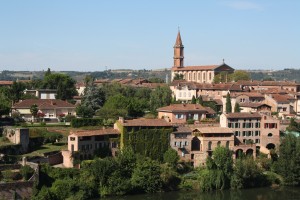Let’s face it: in terms of the grapes we drink these days, we’ve all become pretty boring and pretty French. The majority of what we drink and the majority of what we sip when we go wine tasting are derived from four regions of France. There are the Bordeaux grapes, in particular Cabernet Sauvignon and Merlot. Burgundy provides us Chardonnay and Pinot Noir; the Rhone Valley chips in Syrah and Grenache and the Loire Valley adds Sauvignon Blanc. Go wine tasting virtually anywhere in America or Australia and that’s what the wineries will pour for you.
Oh, yes, it’s quite different in Italy where you’ll get their grapes, in particular Sangiovese, Nebbiolo, and Nero d’Avola in the reds. There are hundreds of local varietals that rarely find their way into export crates. Spain, too, has its own specialties, Tempranillo being the best known. But sometimes in your travels, both in Europe and North America you’ll come across a varietal you’ve never tasted. Hell, you’ve never even heard of it. How do you know if you like it? How do you know if the wine made from those grapes is well made or just plonk?
Of course you can taste strange grapes in some out-of-the-way places on an overseas visit, but increasingly this is also a possibility in more familiar areas. For example, David Coffaro Vineyard and Winery sells all sorts of odd varietals, like 100% Aglianico. Grgich Hills offers some wines that Mike Grgich has been producing in Croatia, like Pošip and Plavac Mali. You’re more likely to enjoy the wines than pronounce them. Tablas Creek Vineyard in Paso Robles has a Tannat. Tannat anyone?
You should remember that even among the best known grapes, there was a time you hadn’t tasted them either. You were probably pretty young and your taste buds not very experienced, but still, how did you react? Steve well remembers the first time he tasted Shiraz, and alternative name for Syrah and very popular these days. But at that time, Shiraz was limited to Australian wines, primarily from the Barossa region. His first reaction was, “This wine has gone bad.” Then he realized that it wasn’t sour or distasteful and, in fact, it was quite good. So that’s the primary advice: Keep an open mind. And mouth, for that matter.
We recently traveled in Southwest France and discovered wines from the area between Albi and Gaillac, known by the name of the former town. The primary grapes in Gaillacs are Duras and Braucol. Never heard of them? Neither had we. (Braucol, according to Wikipedia, is a local name for Fer. That doesn’t help much, because we haven’t heard of Fer either.) So the first thing we did (and we recommend that you do) was to think about what the wine tasted like and smelled like. Gaillac, based on a sampling of six or so bottles, is relatively light bodied, fruity, with a similarity to a Cabernet Sauvignon from somewhere other than Medoc or Napa. Think a lesser area of Bordeaux, like Cote de Bourg. The idea is not to be a wine geek, but to orient your taste buds and relate what you’re tasting with what you’ve tasted before.
Now that you’ve thought about what a wine made from previously unknown grapes is like, give some thought to why the wine is different from what you’ve ever tasted before. This doesn’t have to be a deep exercise in oenology; wine snobbery is not required. Just trust your mouth. If you like this new wine or even if you don’t, try to articulate why, without reference to anything else you already know. Words like deep, round, acid, flat, fruity, flowery, and mellow should come to mind. In other words, you should be using a normal vocabulary. By putting your taste into words, you’ll have a much better understanding of what make a unique wine (to your experience) unique.
In the long run, you are most likely to continue to buy the wines made from grapes you’re already familiar with. There is, after all, a reason that they are the most popular in the world. But the core of wine tasting is discovery, so keep trying wines with funny names, made from grapes you never tasted before.
